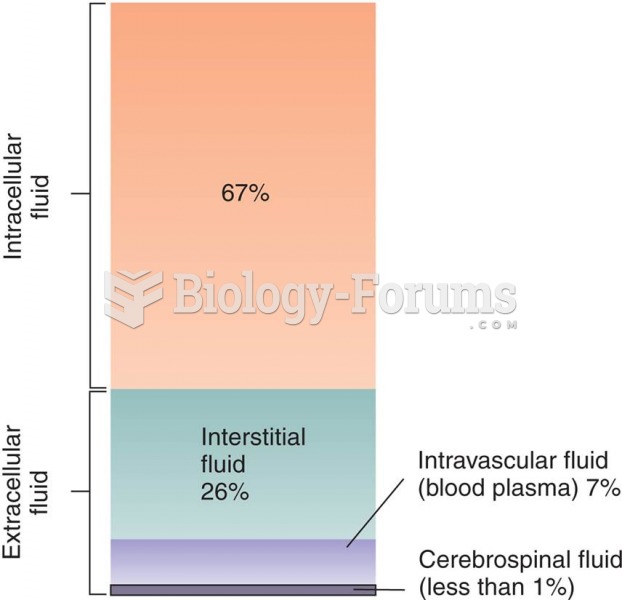Answer to Question 1
C
The client at greatest risk for a fluid volume deficit is the client who has severe diarrhea. Any condition that results in the loss of GI fluids predisposes the client to dehydration and a variety of electrolyte disturbances.
The very young are at risk for a fluid volume deficit because their body-water loss is proportion-ately greater per kilogram of weight. However, in this instance the very young client is not the individual who is most at risk for fluid volume deficit.
A 12-year-old who is moderately active in warm weather will lose body water through sweating, but in this instance is not the individual at greatest risk for a fluid volume deficit.
The very old are at increased risk for fluid volume deficit because they have a decreased thirst sensation and a decreased number of filtering nephrons. However, in this instance the older adult client is not the individual at greatest risk for a fluid volume deficit.
Answer to Question 2
A
The type of surgery that patients undergo determines how quickly they can resume normal physical activity and regular eating habits. It is normal to progress gradually in activity and eating, and if the patient tolerates activity and diet well, he/she can progress more quickly. A common complication after surgery is nausea and vomiting. This can be caused by the anesthesia, fluid imbalance from being NPO, and pain. The gastrointestinal tract may be hypoactive owing to anesthesia. It is best to start with a clear liquid to see if the patient can tolerate the liquid without vomiting. If so, progressing to soup and crackers and advancing as the patient tolerates is appropriate. Starting with a heavy, greasy meal could cause nausea and vomiting. There is no need to stay on clear liquids for 24 hours after this procedure. Putting a time frame on the progression is too prescriptive. Progression should be adjusted for the patient's needs.







